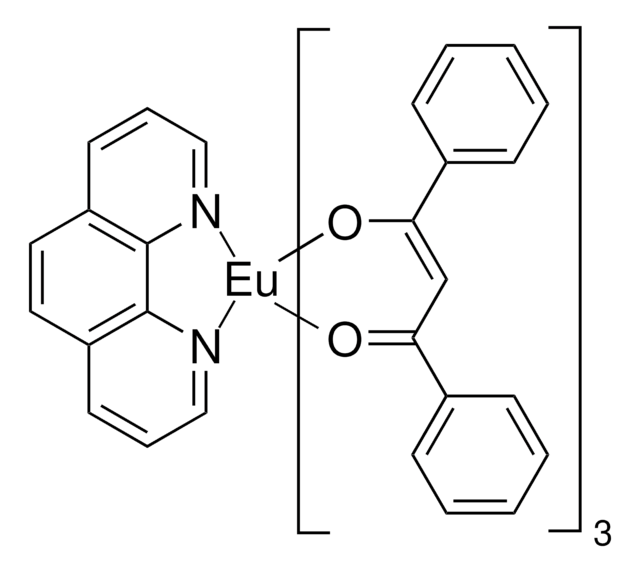410497
4-(Dicyanomethylene)-2-methyl-6-(4-dimethylaminostyryl)-4H-pyran
Dye content 98 %
Sinônimo(s):
DCM
About This Item
Produtos recomendados
Formulário
solid
composição
Dye content, 98%
pf
215-220 °C (lit.)
λmax
468 nm
Desempenho do dispositivo OLED
ITO/Alq3:DCM/Alq3/Mg:Ag
ITO/TPD/Alq3:DCM (10%)/Alq3/Mg:Ag
cadeia de caracteres SMILES
CN(C)c1ccc(\C=C\C2=CC(\C=C(C)O2)=C(\C#N)C#N)cc1
InChI
1S/C19H17N3O/c1-14-10-16(17(12-20)13-21)11-19(23-14)9-6-15-4-7-18(8-5-15)22(2)3/h4-11H,1-3H3/b9-6+
chave InChI
YLYPIBBGWLKELC-RMKNXTFCSA-N
Descrição geral
Aplicação
Características e benefícios
Palavra indicadora
Danger
Frases de perigo
Declarações de precaução
Classificações de perigo
Acute Tox. 4 Inhalation - Eye Irrit. 2 - Flam. Sol. 1 - Skin Irrit. 2 - STOT SE 3
Órgãos-alvo
Respiratory system
Código de classe de armazenamento
4.1B - Flammable solid hazardous materials
Classe de risco de água (WGK)
WGK 3
Ponto de fulgor (°F)
109.4 °F - closed cup
Ponto de fulgor (°C)
43 °C - closed cup
Equipamento de proteção individual
Eyeshields, Gloves, type P3 (EN 143) respirator cartridges
Escolha uma das versões mais recentes:
Já possui este produto?
Encontre a documentação dos produtos que você adquiriu recentemente na biblioteca de documentos.
Os clientes também visualizaram
Artigos
Developed in the last several years, fluorescence quenching microscopy (FQM) has enabled rapid, inexpensive, and high-fidelity visualization of two-dimensional (2D) materials such as graphene-based sheets and MoS2.
Graphene has emerged as the new wonder material. Being only one atom thick and composed of carbon atoms arranged in a hexagonal honeycomb lattice structure, the interest in this material has exploded exponentially since 2004 when it was first isolated and identified using a very simple method.
Nossa equipe de cientistas tem experiência em todas as áreas de pesquisa, incluindo Life Sciences, ciência de materiais, síntese química, cromatografia, química analítica e muitas outras.
Entre em contato com a assistência técnica


![2,5-Dihydro-3,6-di-2-thienyl-pyrrolo[3,4-c]pyrrole-1,4-dione 97%](/deepweb/assets/sigmaaldrich/product/structures/209/681/63a4048f-a2a7-496b-814d-ccb4b5b76124/640/63a4048f-a2a7-496b-814d-ccb4b5b76124.png)








